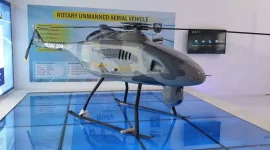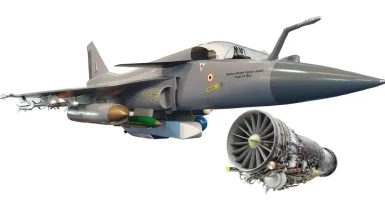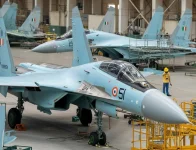- Views: 2K
- Replies: 7
State-owned aerospace and defence company Hindustan Aeronautics Limited (HAL) is proactively using its own funds to advance the design and development of its next-generation transport helicopters, the Indian Multi-Role Helicopter (IMRH) and its naval variant, the Deck-Based Multi-Role Helicopter (DBMRH).
The revelation came from HAL's Chairman and Managing Director, Dr. D.K. Sunil, during the Paris Air Show 2025, signalling the company's commitment to the crucial project while awaiting formal sanction from the Indian government.
The IMRH programme is one of India's most ambitious indigenous military aviation projects, aimed at creating a modern, 12.5-tonne class helicopter to serve across all branches of the armed forces.
It is slated to replace the aging fleets of Russian-origin Mi-17 helicopters, which are the current logistical backbone for the Indian Army and Air Force.
The DBMRH is a specialised version designed for the Indian Navy's unique operational needs.
The total requirement from the armed forces is estimated to be over 550 helicopters, making this a cornerstone of India's defence modernisation and self-reliance (Aatmanirbhar Bharat) objectives.
Highlighting the strategic urgency, Dr. Sunil confirmed that HAL has already initiated "long-lead activities." This involves beginning the complex and time-consuming process of developing critical components such as engines, transmission systems, and rotor blades.
By starting this work early, HAL aims to significantly shorten the overall project timeline once the government gives the official go-ahead, targeting a first flight for the IMRH prototype by 2028 and commencement of production in the early 2030s.
The new helicopters are being designed for the diverse and challenging environments where the Indian military operates, from the high-altitude Himalayan frontier to the expansive maritime zones of the Indian Ocean.
The aircraft will be equipped with a modern glass cockpit, advanced avionics, and will be powered by twin engines. These engines are being co-developed with French firm Safran in a joint venture named SAFHAL Helicopter Engines.
The new engine, named 'Aravalli', is being designed to provide superior performance in India's demanding hot-and-high conditions.
The naval DBMRH variant will incorporate specific features for maritime operations, including foldable rotor blades for compact storage on warships like the INS Vikrant and INS Vikramaditya.
It is intended to fill a critical capability gap for the Indian Navy, whose fleet of aging Sea King and Kamov helicopters are in need of replacement with modern platforms capable of advanced anti-submarine warfare, search and rescue, and troop transport missions.
The development of the IMRH and DBMRH is seen as vital for India's strategic autonomy.
Past security events and ongoing tensions along the nation's borders have consistently highlighted the need for a versatile, high-performance helicopter capable of rapid troop deployment and logistical support in difficult terrain.
The successful execution of this programme will not only equip the Indian armed forces with a state-of-the-art asset but also mark a major milestone in India's indigenous defence manufacturing capabilities.




